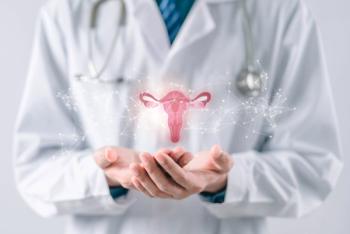
Record low US fertility rate reported in 2024
Driven by economic concerns and shifting family planning trends, the US fertility rate dropped below 1.6 births per woman, despite a slight rise in total births.
The fertility rate has dropped below 1.6 births per women in the United States, hitting an all-time low, according to the Centers for Disease Control and Prevention.1
Factors such as concerns over health care, child care, affordability, and paid leave have led individuals to delay or forgo parenthood. The decline was observed despite an increase in US births registered, from 3,628,934 births to 3,596,017.2 While this indicated an increase of 1%, the general fertility rate (GFR) dropped by 1%.
In 2023, the GFR among female patients aged 15 to 44 years was 54.5 births per 1000 individuals, vs 53.8 per 1000 in 2024. In teenagers aged 15 to 19 years, a decline of 4% was reported, vs a 3% decline in those aged 20 to 24 years and a 2% decline in those aged 25 to 29 years.
Fertility and c-section rate changes
Despite these declines, no significant change in the birth rate was reported among women aged 35 to 39 years, at 54.3 per 1000 individuals in both 2023 and 2024. In those aged 30 to 34 years, a drop of 1% was reported. Finally, women aged 40 to 44 years reported an increased birth rate from 2023 to 2024, at 12.5 and 12.6 per 1000 individuals, respectively.
An increase in the rate of cesarean deliveries was also observed between 2023 and 2024, from 22.8% to 22.9%, respectively. Mothers aged 30 to 34 years had an increase from 23.4% to 23.5%, respectively, while those aged 35 to 39 years had an increase from 26.7% to 26.9%, respectively.
No significant rise in cesarean delivery rates was reported among mothers aged 20 to 24 years. In both 2023 and 2024, a rate of 19.7% was reported among this population. However, those aged 25 to 29 years had a decrease from 21.5% in 2023 to 21.4% in 2024.
Medicaid coverage rates and implications
In 40.2% of 2024 births, Medicaid was used as the primary method of payment. In 2023, the rate was 41.5%, indicating a decline of 3%. All age categories reported a decline of 2% to 3%.
In 2023, rates of Medicaid as the primary source of coverage in patients aged under 20, 20 to 24, 25 to 29, 30 to 34, 35 to 39, and 40 to 44 years were 78.5%, 63.3%, 44.1%, 30.8%, 28.1%, and 30.8%, respectively. In 2024, these rates dropped to 77.1%, 61.5%, 42.9%, 30%, 27.3%, and 30%, respectively.
This data highlights a decrease in the GFR from 2023 to 2024. A 22% drop in the GFR from 2007 to 2024 was noted, alongside a decline in Medicaid coverage by 6% since 2016.
Uncertainty toward childbirth
In June 2025, a study was published in Genus highlighting high rates of uncertainty about having children among women.3 Sixty-two percent of participants intended to have more children, while 35% were not intending and the remainder were unsure
“People’s feelings about having children are complicated, and we found there are a lot of nuances,” said Sarah Hayford, PhD, MA, co-author and professor of sociology at The Ohio State University. “It suggests that there is no simple answer to the declining birth rate in the United States.”
References
- US fertility rate hits record low. George Washington University. July 29, 2025. Accessed July 30, 2025. https://www.newswise.com/articles/u-s-fertility-rate-hits-record-low/?sc=mwhr&xy=10023887.
- Martin JA, Hamilton BE, Osterman MJK. Births in the United States, 2024. National Center for Health Statistics. Accessed July 30, 2025. https://www.cdc.gov/nchs/products/databriefs/db535.htm.
- Krewson C. High rates of uncertainty about having children reported. June 24, 2025. Accessed July 30, 2025. https://www.contemporaryobgyn.net/view/high-rates-of-uncertainty-about-having-children-reported.
Newsletter
Get the latest clinical updates, case studies, and expert commentary in obstetric and gynecologic care. Sign up now to stay informed.










